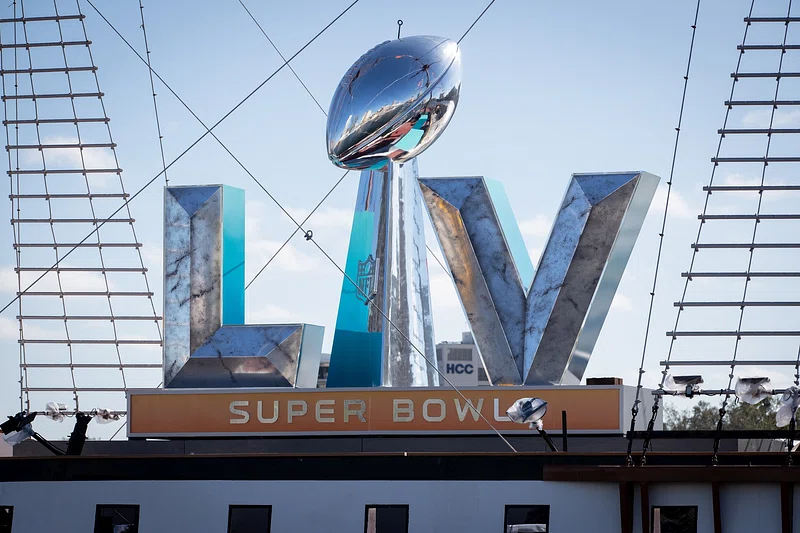History of The World
The history of the world is complicated. The particular part or subject of history that you choose to explore determines where history starts. This account of history is centered around the development of society. The events start with the formation of Earth within the universe and end with the year 2000. In-between is the development of life, mammals, and then humans.
The Formation of Earth
13.8 Billion Years Ago
A limitless, infinitesimal point of heat and denseness explodes, lasting less than a single second. Reheating, a surge of matter and radiation allowed particles, atoms, and the starting components of stars to occupy space in the universe. These building blocks are what everything is made of today.
Neutral atoms, atoms that have the same amount of positive and electric charges, were able to hold light 380,000 years later. This event is called the Afterglow.
4.6 Billion Years Ago
Our planetary system was a nebula, a giant cloud of gas and dust. Because of gravity, gasses were pulling closer and closer together, forming the sun. The sun was surrounded by rocks, ice, and gas, which would turn into the 8 planets in the Solar System. After Earth formed, it was hit by a small planet, similar in size to Mars. A fragment that was chipped off from the young Earth became the Moon. After the Giant Impact, Earth was hit by more meteorites, possibly containing water.
The Beginning of Life
3.7 Billion Years Ago
Microscopic organisms populated the bottom of shallow Precambrian seas. Precambrian Time starts with the formation of Earth to the beginning of the Cambrian Period. These organisms were found in stromatolites, layered sedimentary rock formations made by cyanobacteria. Cyanobacteria is a type of bacteria that can photosynthesize. These organisms had DNA and asexually reproduced.

2.2 Billion Years Ago
The first evidence of atmospheric oxygen dates back 2.2 billion years, although early organisms started to photosynthesize about 3.4 billion years ago. The Great Oxidation Event occurred as a result of the first lifeforms, cyanobacteria, photosynthesizing. The rise of oxygen led the oceans to rust and mass extinction. Rocks predating the event have bands of iron, unlike the rocks postdating the event. The organisms left evolved to use oxygen for respiration. This is also when the ozone layer began to form.
544 Million Years Ago
In the Paleozoic Era, there was rich marine life. Organisms were not able to live on the land because the ozone layer wasn’t fully developed. During the Cambrian Period, organisms started to have shells and outer skeletons. About 100 million years later, during the Devonian Period, plants started to populate land areas, and insects and fish followed the food source. Most fish had jaws, skeletons, and scales. During the Carboniferous and Permian periods, there was complex life all over the supercontinent, Pangea. But at the end of the Paleozoic Era, the rich diversity no longer existed due to mass extinction. 95% of all complex life disappeared. This mass extinction’s specific causes have not yet been identified and defined.
245 Million Years Ago
In the Mesozoic Era, the dominance of dinosaurs was increasing. This era is also distinguished by the appearance of flowering plants. One of the earliest dinosaurs was the Coelophysis. Mammals existed at this time as well, but they were very small, like the size of a mouse. Dinosaurs roamed the Earth for over 160 million years. This era ended with a giant asteroid hitting Earth, wiping out over half of all plant and animal species. Most eras on the geologic time scale start and end with mass extinction events. This is also when Pangea started to break apart.
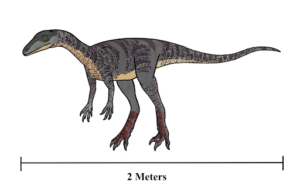
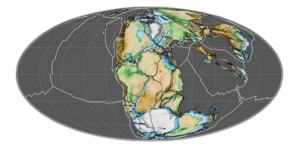
65 Million Years Ago
After the death of dinosaurs, mammals became the dominant animal on Earth. The earliest known mammals were the morganucodontids. The earliest evidence of these creatures dates back to about 205 million years ago. All present-day mammals have descended from the one line of mammals that emerged around this time period. Researchers have not identified which specific line yet.
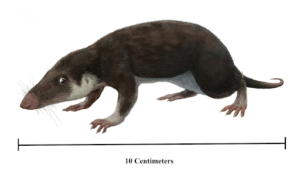
Human Ancestors
4 Million Years Ago
Based on fossil evidence found in Ethiopia, Australopithecus is thought to be the first human ancestor species to walk upright. 40% of the recovered bone structure of an individual thought to be female, nicknamed Lucy, was found during this discovery as well.

450,000 Years Ago
Give or take 150,000 years, “Sima de Los Huesos”, translated to, “The Pit of Bones”, houses the earliest known human relative DNA in the bottom of a cave in the Atapuerca Mountains in Spain. 28 different individuals were collected there. These remains are thought to be the oldest known Neanderthals. Based on the molecular clock, the Neanderthal and modern-day human genomes suggest that the common ancestor lived sometime between 550,000 and 750,000 years ago.
370,000 Years Ago
The human remains, known as Omo One, were found in present-day Ethiopia. Omo one was identified as a Homosapien due to their chin being on their lower jaw and the shape and size of their cranial vault, the space within your skull that houses your brain. Volcanologist Céline Vidal of Cambridge University believes that “before 230,000 years ago, Homo sapiens was already present in [southern Ethiopia],”.
15,000 Years Ago
There was a glacial cycle, of an ice age, that allowed humans to migrate from Africa/Asia to Northern America and South America.
Early Civilization
12,000 Years Ago
The Neolithic Revolution, also known as the First Agricultural Revolution, is when cereal grains, seeds that come from grasses like wheat, barley, and rice, were thought to have been first farmed.
10,000 Years Ago
The Cradles of Civilization, any society that developed independently, are Mesopotamia, Ancient Egypt, Ancient Maya, Ancient China, Ancient Greece, Ancient Persia, Ancient Rome, Ancient Aztec, and the Indus Valley civilizations.
Mesopotamia, 3500 BCE to 500 BCE, is distinguished by the fact that there are no other civilizations predating it. The Indus Valley civilization, 3300 BCE to 1900 BCE, is distinguished by its size, spanning about 780,000 miles. Ancient Egypt, 3150 BCE to 30 BCE, is distinguished by the construction of pyramids. The Mayan civilization, 2600 BCE to 900 CE, are distinguished by their complex understanding of astronomy. Ancient China, 1600 BCE to 1046 CE, is distinguished by the invention of paper and silk. Ancient Greece, 2700 BCE to 479 BCE, are distinguished by their concepts of democracy and the invention of the Olympics. Ancient Persia, 550 BCE to 331 BCE, is distinguished by the Royal Road. The Royal Road was rebuilt by the Persian King Darius to improve internal communication. Ancient Rome, 550 BCE to 465 CE, is known for being the most powerful ancient civilization. Aztec civilization, 1345 CE to 1521 CE, is distinguished by the rise of their language, Nahuatl. Incan civilization, 1438 CE to 1532 CE, is distinguished by the fact that it was the largest empire before European colonization.

Religious Development
4,000 Years Ago
Hinduism is believed to have developed in the Indus Valley near present-day Pakistan. Indo-Aryan populations migrated to the valley and their culture blended with the culture of the indigenous peoples. Hinduism, a collection of traditions and philosophies, takes on a different form of traditional religions. Religion is “the belief in and worship of a superhuman controlling power, especially a personal God or gods”, from the Oxford Languages Dictionary.
Also dating back about 4,000 years is Judaism. Judaism began when God told Mesopotamians, Abraham and Sarah, to leave Mesopotamia, and go to Canaan. This religion is thought to have originated in Canaan, or present-day Israel and Pakistan territories. Judaism follows the Torah, similar to the Old Testimate of the Christian Bible, however, their orders differ.
2,500 Years Ago
Growing from Hinduism, Buddhism developed in present-day India. Buddhism heavily recognizes that life is full of suffering. Their founder, Siddartha Guatama, aka the Buddha, was born into a wealthy family and was moved by the suffering he observed in the world. He decided to give up his fortunes and live in poverty. Buddhists follow the Eightfold Path - Right Understanding, Right Thought, Right Speech, Right Action, Right Livelihood, Right Effort, Right Mindfulness, and Right Concentration.
2,000 Years Ago
Growing from Judaism, Christianity developed in Judea, in present-day Israel. Abraham, a prophet, sent the angel, Gabriel, to ask a woman, Mary, to become the mother of Jesus. Jesus is Christianity’s god in human form. When Jesus turned 30, he became the living word of God. Christian beliefs focus on the birth, life, death, and resurrection of Jesus. Christianity is thought to be the most successful spread of religion.
1,400 Years Ago
Islam originated in the Arabian Desert, when the prophet, Muhammed, was visited by the angel Gabriel and heard the words of Allah. Muslims, adherents of Islam, follow the Five Pillars; Shahada, Salat, Zakat, Sawm, and Hajj.
The New World
500 Years Ago
The Age of Exploration is when Europeans started to explore the world, the root causes of which are money and power. They wanted new trade routes for spices and silk, silk and gold, and knowledge. This is also the beginning of mapping the Americas. The Columbian Exchange stemmed from this exploration.
The Columbian Exchange is the beginning of Globalization in the Western Hemisphere. It was mass migration to the Americas, along with the exchange of plants, animals, foods, slaves, and commodities between the Americas, Europe, and Africa.
Although this time period is extremely glorified because of the advancements made by European powers, it’s important to acknowledge the Europeans’ importation of slaves from Africa and the genocide of the already present indigenous populations. Forced labor, foreign diseases, guns, and sexual violence were all used to completely alter their way of life. When the Europeans came to colonize the Americas, their use of the land was not sustainable and made the land unusable for the already present populations.
300 Years Ago
The Age of Enlightenment began in 1715. European theorists believed that society could be drastically improved through rational change. Directly inspired by this thinking were books, essays, inventions, scientific discoveries, laws, wars, and revolutions; specifically the French and American revolutions.
The Age of Revolution
260 Years Ago
The Industrial Revolution started in Britain and was the transition from manufacturing and producing goods by hand to manufacturing and producing goods with machinery. It was partially an effect of the Agricultural Revolution; the huge surplus of food sustained such a large population, allowing them to focus on development of society in other areas.
This is also around the time when the Seven Years War started. The Seven Years War, 1756 - 1763, was fought between Britain and France. Britain declared war on France after years of conflicts in North America. Britain and its allies, and France and its allies battled over colonies in the Americas. France lost territories in Canada, however the cultural divide there still runs deep.
250 Years Ago
The Age of Revolution began in 1775 with the American Revolution. After the Seven Years' War, Britain needed to regain the money they lost, so they started to heavily tax their colonies on the east coast of present-day America. Among other things, the colonists disagreed with increased taxes, leading to the American Revolution. Aiding the colonies the most was France. Some historians attribute France's intervention to the Seven Years' War.
On the heels of the American Revolution, the French Revolution began in 1789, changing the government from a combination of absolute monarchy and feudalism to a representative government. The three social classes were the First Estate, consisting of the Roman Catholic Clergy, who paid no direct taxes to the king, the Second Estate, consisting of Nobles, who also paid no direct taxes, and the Third Estate, consisting of the urban middle and lower class and the rural lower class, who all paid high direct taxes to the king. The main causes of this revolution include an extreme level of wealth distribution where the majority of the population lacked the means to provide housing and food for their families, which led to a loss of support for the government as it didn’t accurately represent the states’ demographic.
The Haitian Revolution, which began in 1791 was a conflict between Haiti and France. Prior to the French colonization of Haiti, it was a colony of Spain. The native Taino and Ciboney people were forced to mine for gold but were soon killed by European diseases. Slaves were then imported from other Caribbean islands, meeting the same fate. The Haitian Revolution overthrew the French Regime, lasted over a decade, and is the first and only country where slave freedom was taken by force.
The Latin American Wars of Independence began in 1808. All territories except for present-day Cuban and Puerto Rican colonies were free from Iberian rule. Columbia was the first to gain its independence in 1810 and Suriname was the most recent country to gain its independence in 1975. The United State’s closest Latin American neighbor, Mexico, was in a constant state of revolution. Its allies were continuously shifting under a Spanish dictatorship. Like all other revolutions, the majority of people at the bottom of the social pyramid disapproved of the oligarchic nature of their government. Finally, in 1821, Mexico gained its independence.
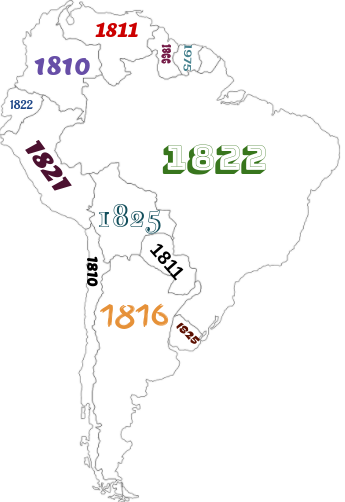
220 Years Ago
In 1803, the world population first reached one billion.
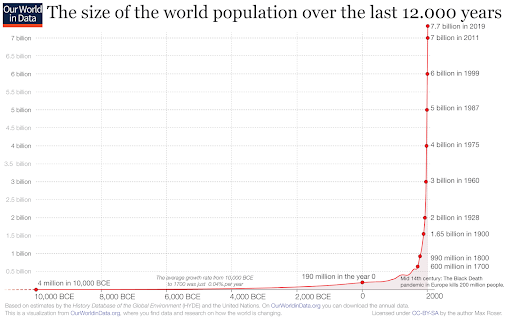
100 Years Ago
World War One began after Archduke Franz Ferdinand of Austria was assassinated by Gavrilo Princip of Serbia. Some historians believe that not being able to identify the exact cause of this war is the main reason why the war happened. Germany, Austria-Hungary, Turkey, France, Great Britain, Russia, Italy, Japan, and the United States were all involved. The war ended with the Treaty of Versailles; the then “central powers'', Germany, Austria-Hungary, and Turkey were defeated.
90 Years Ago
The Great Depression was a ten-year-long global loss of economic activity. The Great Depression was more abrupt than a recession, which are typically gradual.
80 Years Ago
World War Two began when Germany invaded Poland to take back their lost territory. Many historians believe that the Second World War is a continuation of the conflicts left unsettled. While almost every part of the world was involved during this war, the “big names” of this war were Germany, Italy, Japan, France, Great Britain, the United States, the Soviet Union, and China. Naizs in Germany wanted to eradicate Jewish People from the world.
75 Years Ago
The Cold War was a conflict between the Soviet Union and the United States of America. It was a series of proxy wars; when a major power instigates a war but does not actually participate in it, and an Arms Race, the competition of development and collection of military weapons. The Soviet Union and the United States were both making atomic bombs, each time trying to “one-up” the other. The conflict expanded into space. The USSR put the first human into space then the US put the first human on the moon. This was more than just a conflict between countries, it was also a conflict between cultures and competing economic systems.
50 Years Ago
The world population reached four billion. After this, the population increased by a billion after about every 12 years.
40 Years Ago
The official birthday of the Internet is considered to be January 1, 1983. But only in the year 2000 did 50% of US households have a computer, and 41.5% of US households have the Internet.
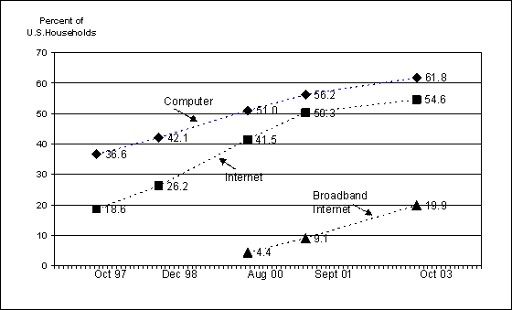
30 Years Ago
The USSR began to collapse in the 1980s and was officially dissolved in 1991. The USSR split into Russia, Ukraine, Georgia, Belorussia, Uzbekistan, Armenia, Azerbaijan, Kazakhstan, Kyrgyzstan, Moldova, Turkmenistan, Tajikistan, Latvia, Lithuania, and Estonia. When Mikhail Gorbachev became the General Secretary, he proposed two new policies, Glasnost and Perestroika. Glasnost allowed freedom of speech and government clarity. Perestroika restructured its economy to function more efficiently. Soon states demanded their freedom, the first states to do so were Estonia, Lithuania, and Latvia. Then in the summer of 1991, communist hard-liners attempted a Coup, the August Coup. But without military support, they failed. Later that year, the Soviet Union ceased to exist.
The Age of Information
22 Years Ago
6.1 billion people enter the 21 Century. Cell phones were everywhere. Gas prices were relatively low. Panama gained control of the Panama Canal. A huge solar flare, known as Bastille Day, took place, exposing air travelers to radiation equal to a chest x-ray. The Summer Olympics took place in Australia. The USS Cole was damaged by two suicide bombers in Yemen. Mad Cow Disease increases global concerns as cases grow in Europe. A space mission called Expedition 1, occurred successfully when the first three astronauts lived in the International Space Station for 136 days.
Conclusion
Some say that the beginning of time is when the universe was created, or when complex life was able to experience the passage of time. Others say that the beginning of time is when human ancestors became sentient. Either way, the reality of reality is that it could all just be a shared hallucination.

